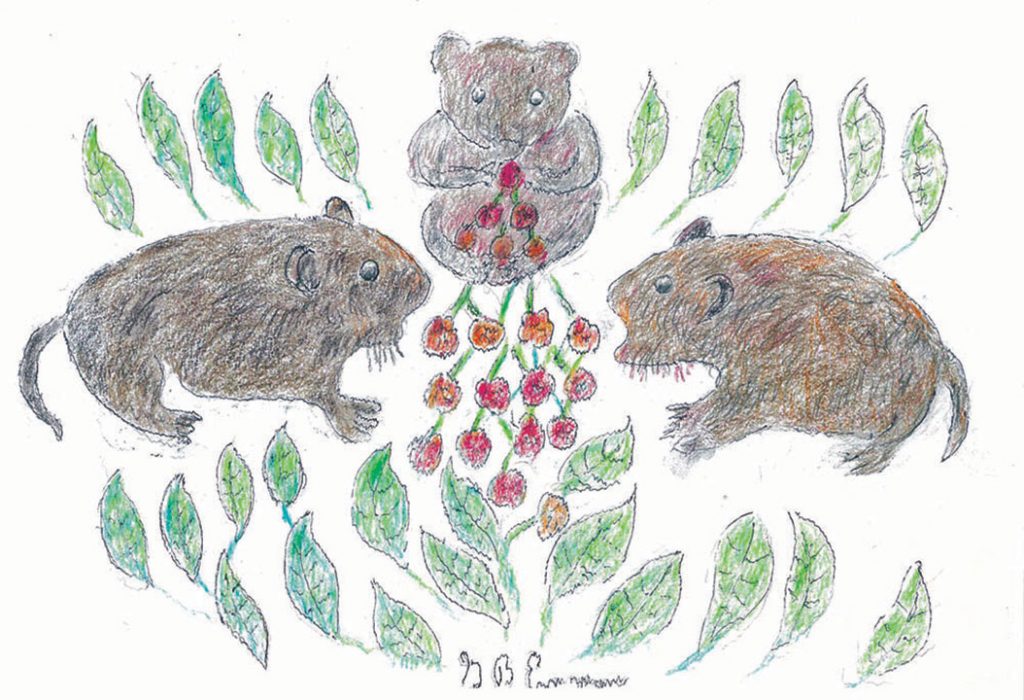Voles are small underground working rodents, mysteriously secretive working out of sight, except leaving behind small conical piles of soil as an indication of their industrious digging.
They are about 5 to 7 inches long with stocky bodies covered with grainy brown fur. They have small black eyes with rounded ears that do not project much above their heads. Their brown fur coats are thick and dense but then turning a lighter shade of gray uniformly under the upper part of their bodies.
Voles are classified as industrious diggers, carving out a figure-eight pattern or tunnels and runways with periodic entrance holes wherever convenient. On the surface, Voles come up to eat a variety of plants and fruit such as wild raspberries as in my illustration. However, their appetite does the most destructive damage in both spring and fall by stripping a girdle around the base of lower trunks of new trees. Property owners prevent this from happening by wrapping a metal screen around the lower base to deter gnawing moles.
The Vole range of gnawing is evident about an acre or less but varies with other food availability and predator food chain including hawks, owls, snakes, weasels, racoons, foxes and, of course, house cats. Shrews are a competitive but smaller species than Voles, which come in a much bigger so-called Meadow Vole from Pennsylvania, measuring up to 8-inches long. In other countries, Voles also come in many other sizes and shapes, depending on adjustment to different habitats.
The Vole has a somewhat similar species of better-known Northern Lemmings with an irruption influence on our snowy owls’ migration based on targeting Voles as a food supply. However, we need to probe this Vole investigation by looking at survival activity below or on the surface of the earthly environment, such as their underground digging in your gardens.
I have painted in your mind an unusual awareness that comes to light only as you read my article and see my illustration.
By George B. Emmons
